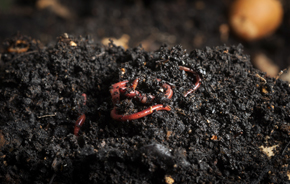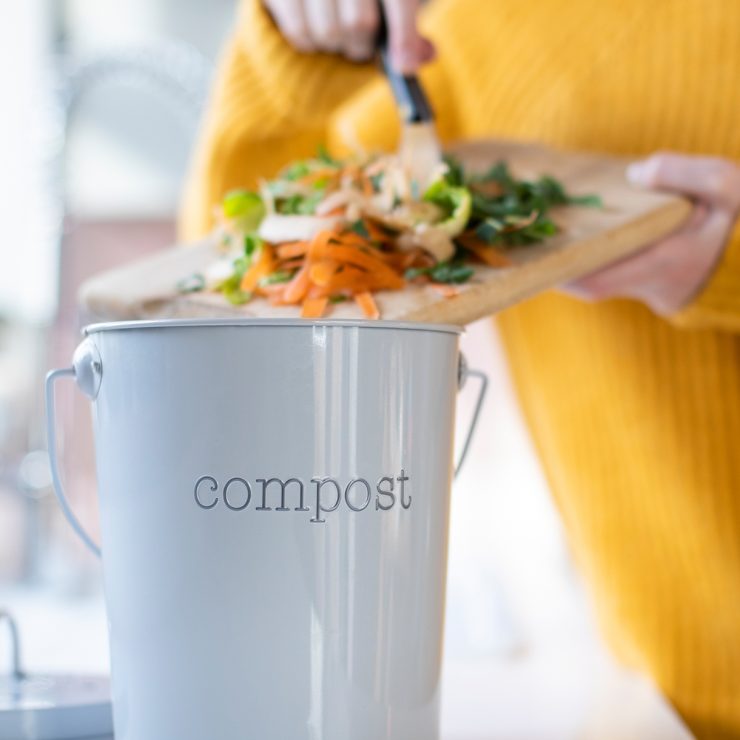If you already compost or want to compost, its benefits may be apparent to you already. Composting is an excellent way of positively contributing to your local ecosystems. It is also fun and rewarding! Here at Straughan, we have two large composting tumblers that we all contribute to and maintain regularly. However, it relies on a steady supply of “brown” matter: leaves, sawdust, straw, or other carbon-rich materials. And while the prime time for collecting leaves has passed entirely, there is still another opportunity for you to start a compost system of your own.
Vermicomposting is a great alternative to turn your food waste into the nutrient-rich “Black Gold” that you need to grow your tomatoes and peppers into the envy of the neighborhood. Whereas traditional composting relies on naturally forming cultures of bacteria, insects and fungus to break down the food into the dark brown soil that we’re all familiar with, vermicomposting, like the name suggests, employs worms instead.
So why go with this form of composting? If the ship has sailed for stockpiling leaves to contribute to the 3 parts brown, 1 part green ratio required for traditional composting, you may be in luck! Vermicomposting accepts most kinds of shredded scrap paper to supplement your food scraps, meaning you are no longer reliant on scavenging for leaves. This could be a big plus if you live in an urban environment or another area where the supply of brown matter is less than abundant. This brings us to another benefit — indoor composting.
While traditional composting can be done indoors, it greatly benefits from direct heat from the sun, hence why many outdoor bins are made of black plastic. Vermicomposting can be done indoors, year round, giving you more soil to work with when spring comes around. When done properly, it is odorless, so it can be tucked away under a sink or in a closet near the kitchen.
 Our friend here is the humble red worm. It can eat approximately half its body weight in your food waste per day, it makes a microbial-rich liquid that you can add to your garden to promote healthier soil, and under the right conditions, doubles its population in about 90 days. If that’s not enough, red worms make for great fishing bait!
Our friend here is the humble red worm. It can eat approximately half its body weight in your food waste per day, it makes a microbial-rich liquid that you can add to your garden to promote healthier soil, and under the right conditions, doubles its population in about 90 days. If that’s not enough, red worms make for great fishing bait!
So, how do you get your own system started?
There are many detailed outlines available, like the guides on the EPA and Massachusetts Government websites (see below), though the setup is very simple and straightforward. If you’re willing to pay a slight premium, there are many pre-built bins available to buy from numerous sources. All there is left to do is add your food scraps, shredded paper and worms, and presto! You have a lean, mean, scrap-eating machine ready to take on the food waste of even the pickiest eaters.
If you’re not keen on shelling out the money for a pre-built bin, you can get most of the materials you need for under $20. That’s if you don’t already have them lying around the house, which is not unlikely! You will need two plastic storage containers: a taller, larger container that you will drill holes in the top and bottom for ventilation and drainage, and a shorter container that will go underneath to catch the liquid that will be produced over time. Other than the aforementioned paper, food, and chemical-free soil to get it started, you will need a drill with 1/8″ and 1″ bits, and, of course, the worms!
That’s it! You now have everything you need for creating your own family-friendly fertilizer factory; it’s that easy! Be sure to check out these other wonderful guides on vermicomposting!
Massachusetts Executive Office of Energy and Environmental Affairs
